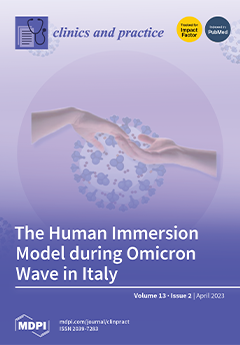Testosterone replacement therapy (TRT) has been used to treat hypogonadal males with type 2 diabetes mellitus (T2DM) for a long time, despite variable results. This meta-analysis examines TRT’s role in hypogonadal males with T2DM. The databases PubMed, Embase, and Google Scholar were searched
[...] Read more.
Testosterone replacement therapy (TRT) has been used to treat hypogonadal males with type 2 diabetes mellitus (T2DM) for a long time, despite variable results. This meta-analysis examines TRT’s role in hypogonadal males with T2DM. The databases PubMed, Embase, and Google Scholar were searched for relevant RCTs and observational studies. Estimated pooled mean differences (MDs) and relative risks with 95% confidence intervals were used to measure the effects of TRT (CIs). When compared to the placebo, TRT improves glycemic management by significantly reducing glycated hemoglobin (HBA1c) levels (WMD = −0.29 [−0.57, −0.02]
p = 0.04; I2 = 89.8%). Additionally, it reduces the homeostatic model assessment levels of insulin resistance (WMD = −1.47 [−3.14, 0.19];
p = 0.08; I2 = 56.3%), fasting glucose (WMD = −0.30 [−0.75, 0.15];
p = 0.19; I2 = 84.4%), and fasting insulin (WMD = −2.95 [−8.64, 2.74]; however, these results are non-significant. On the other hand, HBA1c levels are significantly reduced with TRT; in addition, total testosterone levels significantly increase with testosterone replacement therapy (WMD = 4.51 [2.40, 6.61]
p = 0.0001; I2 = 96.3%). Based on our results, we hypothesize that TRT can improve glycemic control and hormone levels, as well as lower total cholesterol, triglyceride, and LDL cholesterol levels while raising HDL cholesterol in hypogonadal type 2 diabetes patients. To this end, we recommend TRT for these patients in addition to standard diabetes care.
Full article






